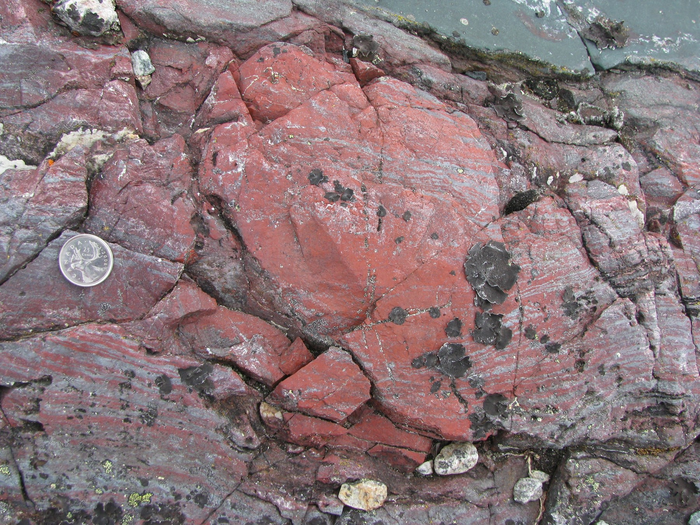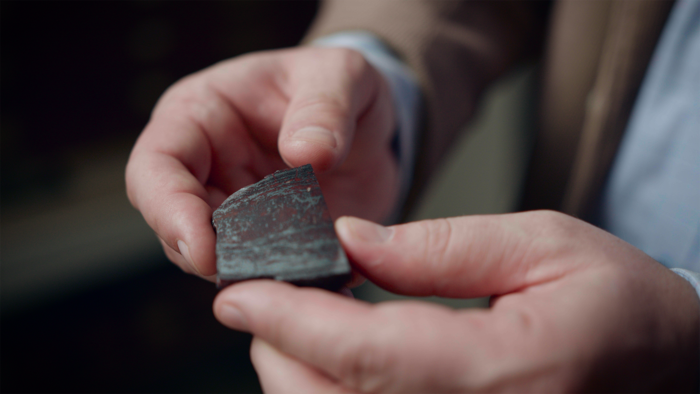There are many forms of microbial life on Earth At least 3.75 billion years agoThis is suggested by a new study conducted by researchers fromUniversity College London Which challenges the traditional theory of the beginning of life. For the study, posted on Science predecessorThe research team analyzed a fist-sized rock from Quebec, Canada, estimated to be 3.75 to 4.28 billion years old. In an earlier article published in Nature, the team found tiny filaments, protrusions and tubes in the rock that appear to have been produced by bacteria. However, not all scientists agree that these structures—which date back roughly 300 million years ago than is generally accepted as the first sign of ancient life—were of biological origin.
Now, after a thorough analysis of the rock, the team has discovered a larger and more complex structure — a trunk with parallel branches on a side about an inch long — as well as hundreds of deformed balls, or ellipsoids, next to tubes and filaments.
The researchers explained that while some structures may have been created through random chemical reactions, the “tree-shaped” trunk with parallel branches is likely biological in origin, as no structures created through chemistry alone have been found.
The team also provided evidence of how bacteria obtain their energy in different ways. They discovered metallic chemical products in the rocks that correspond to ancient microbes that subsisted on iron, sulfur, and possibly even carbon dioxide and light through a form of photosynthesis that did not include oxygen.
These new findings, according to the researchers, suggest that a diverse group of microbial life may have existed on Earth early on Only 300 million years after the formation of the planet.
Lead author Dominic Papineau (UCL Earth Sciences, UCL London Center for Nanotechnology, Center for Planetary Sciences, China University of Geosciences) said:Using many different types of evidence, our study strongly suggests that different types of bacteria existed on Earth between 3.75 and 4.28 billion years ago.“.”This means that life has begun Only 300 million years after the formation of the Earth. Geologically speaking, speed: one revolution of the sun around the galaxy“.”These results have Implications for the possibility of extraterrestrial life. If life is relatively quick to emerge, under the right conditions, this increases the chances of life being found on other planets.“.
For the study, researchers examined rocks from Quebec’s Nuvvuagittuq Supracrustal Belt (NSB) that Babineau collected in 2008. The NSB, which was a piece of sea floor, contains some of the oldest known sedimentary rocks on Earth, which are believed to have been deposited near the vent system. Hydrothermal, where cracks in the sea floor allow iron-rich water heated by magma to pass through.
The research team cut the rock into paper-thick sections (100 microns) to get a closer look at the tiny fossil-like structures, which are made up of hematite, a form of iron oxide or rust, and coated with quartz. These “slices” of rock were more than twice the thickness of previous sections the researchers had cut, allowing the team to observe larger structures of hematite within them. They compared the structures and structures with more recent fossils and bacteria found today near hydrothermal vent systems. They discovered modern equivalents of twisted filaments, parallel branching structures, and deformed (irregular ellipsoid) spheres, for example near the underwater volcano Loihi near Hawaii, as well as in other systems in the Arctic and Indian Ocean.

In addition to analyzing the rock samples using various optical microscopes and Raman microscopes (which measure light scattering), the research team also digitally recreated sections of the rocks using a supercomputer that processed thousands of images from two high-resolution imaging technologies. The first technique was computerized tomography, or micro-imaging, which uses X-rays to observe hematite within the rocks. The second is the focused ion beam, which penetrates small sections of rock – 200 nanometers thick – using an integrated electron microscope that takes an image between each section.
Both methods produced numerous images used to create 3D models of different lenses. The models then allowed the researchers to confirm that the hematite filaments were undulating, twisted, and contained organic carbon, characteristics shared with modern iron-eating microbes.
in the analysis, The team finished The hematite structures could not have been created by compression and heating of the rock (metamorphosis) over billions of years, noting that the structures appear to be better preserved in finer quartz (less affected by metamorphism) than in the raw materials (which underwent more metamorphism).
The researchers also looked at the levels of trace elements in the fossil-filled rocks, and found that they showed the same levels as other ancient rock samples. This confirmed that the seafloor sediments were as old as the surrounding volcanic rocks and were not as smaller intrusions as some had expected.
Prior to this discovery, the oldest previously reported fossils were found in Western Australia and dated to 3.46 billion years old, although some scholars have also disputed the fossil’s status, arguing that they are not of biological origin.

“Internet trailblazer. Travelaholic. Passionate social media evangelist. Tv advocate.”







More Stories
Going to Mars While staying in Turin, the Space Festival kicks off
Watch the future “collision” between the Andromeda Galaxy and the Milky Way, the video is incredible
NASA's innovative and revolutionary sail that will make us fly into space using only the sun's energy